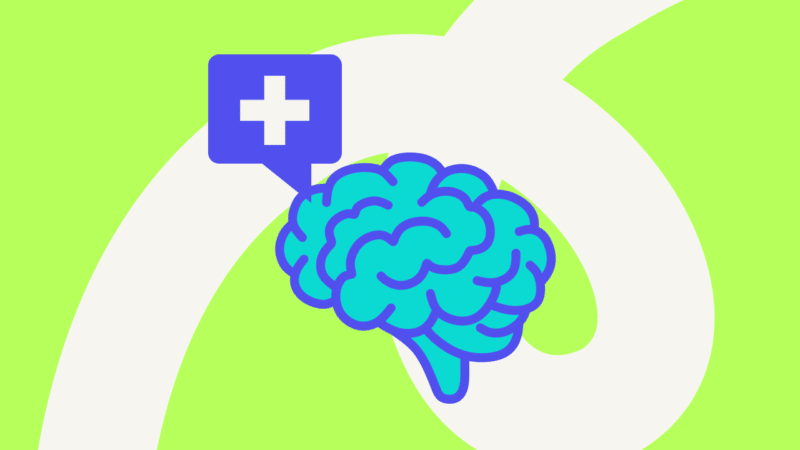Frontline hospital workers brave herculean worries, putting their health at risk for the health of others. In recent months when hospitals tell their stories about COVID and patient care were making headlines, behind the scenes, hospital administrators were stepping up their focus on staff care.
Workforce mental health and wellness are an ongoing concern among hospitals. And for good reason. Critical incident stress management (CISM) is a real challenge. The suicide rate among male physicians, for instance, is 1.41 times higher than the general male population. And among female physicians, it’s even more pronounced (2.27 times greater than the general female population). A national U.S. study confirms that male and female nurses are also at higher risk than most.
Outside of the healthcare forum, researchers across Europe discovered rising levels of anxiety, depression and other mental health impacts amid the pandemic. In the U.S. a national household pulse survey conducted in June found nearly a third of Americans reported experiencing symptoms of anxiety.
How Are Hospitals Responding to Psychological Safety, Emotional Health, and Wellness?
Mental health crisis results from the convergence of multiple stress factors. COVID brought on lots – pushing mental health and wellness to the forefront of hospital priorities. Today’s Health & Safety experts are on the lookout for novel approaches. They’re conferring with other like-minded facilities, establishing networking forums, and sharing best practices. Here are nine proven hospital practices for your organization’s consideration:
1. Build a mental health strategy into your organization’s strategic plans
Make the overall mental health of your employees a top corporate priority. Check out this example from Toronto Sick Kid’s 2025 Strategic Plan.
But what should that strategy look like? What does it mean? What are the details of that plan?
Does it include training for all employees?
Prevention and promotion and response angles?
How do you navigate the healthcare system to get your workforce the services they need?
Should you have external relationships with psychologists and psychiatrists so that your people have that access? to break down barriers and keep people at work?
Online Cognitive Behavioural Training (CBT) is showing signs of effectiveness. Importantly, it appeals to people who are afraid of being spotted at a mental health professional’s office because of the “stigma” attached. Is there a role for virtual counseling in your plan?
2. Form peer support teams
Establish a group of individuals from all sorts of levels and departments across the organization, nominated by their peers. These people are good listeners and typically sought out when others are troubled. Provide training on communication, critical incident stress management, psychological safety and emotional well being.
A leading metropolitan hospital in Canada reports close to 80 people or 1% of its total workforce make up their peer support team including clinical and non-clinical physicians, nurses at all levels, directors, managers and frontline staff. The idea is that individuals can choose who they want to talk with. While an Employee Assistance Program (EAP) is okay, the hospital has found people want to talk to someone who understands what they’re feeling and experiencing. The hospital had this program in place prior to the pandemic and has seen a greater uptake since with more and more people coming forward for one-to-one support.
3. Measure – to support
How do you measure situations so that you can be ready when people are close to a mental crisis? And how do you prevent them from going off, from derailing? Hospitals have found if an individual is not present in their work, there’s potential for error (and errors in a hospital setting can be the difference between life and death). The same can be said of organizations: safety errors can lead to injury and loss of life, business errors can lead to potential ruin.
Depression, anxiety and mood disorders all actively work to undermine performance. They often contribute to burnout, conflict, toxic company culture, increased employee turnover, an inability to hire top talent, an inability to “show up” for important meetings and pitches and poor decision making in general. According to Harvard Business School’s Noam Wasserman, 65% of failed tech startups fail for avoidable human-centric reasons typically exacerbated by the founder’s burnout and high mental and emotional strain.” (Techcrunch.com)
That’s why our organizations need to pay attention to the mental health of our people. To support individuals through the aftermath of a serious safety event or erroneous action. No one gives the wrong medication purposely or over bills a client intentionally. If an error is caused by system deficiencies (like medication bottles too similar in colour, or incorrect data input because of illegible handwriting), or if the process doesn’t have enough checks and balances that could lead to mistakes – deal with them as soon as you find them.
But recognize that things can fall through the cracks. When you encounter mistakes, analyze why they happened and learn from them. And also recognize that an erroneous experience is traumatic – for the person or team in a hospital environment and the person or team in an organization where pride in work is an employee mainstay. Support individuals through those experiences.
4. Insist managers “make rounds” with their staff
Making rounds isn’t an exclusive domain of hospital staff visiting patients. Expect managers to check in on their staff every single day: “Hi. How are you? What’s on your mind today.” Provide managers with the training to understand it’s not always the words their team members use, it’s their behavior that can signal something’s amiss. If managers understand an individual’s baseline, they’ll know how to recognize when a red flag is waving.
5. Run ongoing anti-stigma campaigns
Use posters as a passive but effective messaging conduit. Resources from the likes of Mental Health America (MHA), the Centre for Addictions and Mental Health (CAMH), and the Canadian Mental Health Association (CMHA) are a good place to start.
To target your messages effectively, do some research to identify areas that should be on your radar.
- Find out what data is available from your long-term disability provider.
- Check-in with insurance case managers to find out if they’re seeing an increase in mental health claims.
- Is work stress one of the prime reasons why people are reaching out to EAP?
- Set a baseline and follow year by year, or in COVID times, month by month. Possibly even week by week.
6. Use employee engagement and pulse surveys to monitor employee mindset
In your engagement surveys include a couple of questions to get a sense of how people are feeling. Use health and wellness pulse surveys for timely, in-the-moment insights. It’s hard to tease it all out, but tease it out as best you can. And then communicate and use what you learn to form next steps.
7. Organize department-specific events
Organize mental health events that bring together people who work in the same departments and share similar work experiences. You’ll get better participation when a mental health event is specific to one area. People from some departments may be tired from constantly going, going, going over a long period of time and may be on the verge of burnout. After all, COVID has been wreaking havoc for the better part of 2020, with no definitive end in sight. Conversely, other areas of the organization may have dealt with extended downtime, leaving some feeling disengaged and unable to ramp back up to previous levels of motivation or productivity.
Know that some people will be quiet while others are more talkative; bring in people with a mental health background to facilitate discussions.
In a hospital setting, for instance, a critical incident stress management approach for a specific floor where people have gone through a traumatic event has proven to get better uptake because participants know their colleagues are going to be there. This process has in fact been so effective that consideration is being given to offering similar custom-approaches to companies outside of the hospital sector.
8. Be creative (remembering to include your remote workers)
Subtle anti-stigma, pro-mental health campaigns can be fun too. Successful participation has been seen with online socials ranging from trivia challenges about team members (people submit information about themselves in advance), to wine sessions and cooking lessons, crafting and painting. Hold proverbial cooler chats at random times to give people an opportunity to catch up in this virtual world. Encourage departments to hold their own wellness events. Reports indicate a nursing week featuring a series of weekly activities and workout challenges had high engagement. It might have been that a code word was embedded in each of the sessions and participants who submitted all of the codes were eligible to win a compelling something. Whatever the reason, it engaged.
9. Tap into your networks
A growing trend among hospitals is to work together. While there are just a few with peer teams in place, a network of health and safety people has formed to share policies and practices. There are loads of excellent education programs they turn to such as “The Working Mind” offered through the Mental Health Commission of Canada. But keep in mind these one-time training programs and insights from others aren’t enough on their own. Take bits and pieces of this and that from your networks. Make something that works for your organization, a plan that keeps mental health and wellness going, that keeps it alive.



